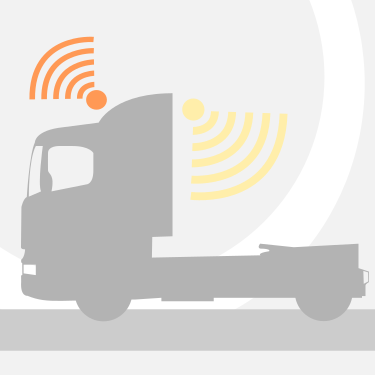Understanding vehicle telematics for the bulk logistics industry

22 February 2019
Understanding
vehicle telematics for the bulk logistics industry

When it comes to car
insurance, securing a lower premium can be as simple as having a black box
fitted to your vehicle, provided you’re a responsible driver, of course. Black
box devices – or telematics boxes as they’re also known – can be installed out
of sight on your car in order to record data about the way you drive; data that
insurance companies can use to create a premium based on your actual driving
behaviour, rather than demographic or statistical info.
Black box insurance is
one of the latest and most high-profile uses of vehicle telematics in action,
but there’s far more that this technology can do. In fact, vehicle telematics
finds one of its most invaluable use cases in the bulk logistics sector, using
live big data insight
to help fleet managers monitor and refine driver performance in the field.
How does vehicle telematics work for
bulk logistics?
Much like a black box
on a car, telematics devices for bulk logistics fleets work by recording
information about the way each vehicle is driven and reporting it back to fleet
managers back at base through mobile connectivity.
Telematics technology connects
to on-board diagnostic sensors to track driving data, such as the way a driver
accelerates and brakes, and transmits it back in real-time. With GPS built in,
vehicle telematics also enables you to map exactly where each vehicle is and
how fast it’s moving.
Just as you could if you
were in the cab with each of your drivers, you gain a view of driver behaviour
in detail, as well as vehicle and route data you can use to optimise
operations.
What’s more, vehicle
telematics for bulk logistics can be seamlessly
integrated with other essential technologies your drivers use as
they carry out drops, including job manifestos, Electronic Proof of Delivery
(EPOD), maps, and vehicle maintenance checking.
All systems combine within a
single in-cab computer, just as intuitive and easy-to-use out of its mounted
cradle as it is on the move. This telematic-enabled hardware gives you a means
to receive a constant stream of invaluable real-time vehicle, driver and
job-by-job data.
The benefits of vehicle telematics
for bulk logistics
So, what exactly can
vehicle telematics technology reveal about driver performance within your
fleet? Here are some of the biggest benefits of using a telematics-enabled
logistics optimisation system.
Better fuel efficiency
Some of the main
contributors to poor fuel over-consumption are severe acceleration, speeding
and time spent idling. With vehicle telematics, you can see which of your
drivers might be leaning towards bad habits behind the wheel and take steps to
retrain them. It needn’t take long for these incremental changes to add up
either; one US-based national logistics company managed to cut
their fuel costs by almost $3 million within a year using vehicle telematics to
improve driver behaviour.
Improved safety
Better driver
discipline automatically leads to better safety and sustainability standards
out on the roads, and less chance that any of your vehicles will be involved in
an accident. But telematics can also let you know if any of your drivers are
routinely failing to wear their seatbelts, a vital precaution that not only
protects them in the event of an incident, but also ensures they and you remain
legally compliant as they carry out their duties.
Less vehicle wear and tear
The ability to keep an
eye on the way your drivers are handling your vehicles can also help to
minimise fleet deterioration. Extensive time on the road will naturally start
to affect your vehicles after a while, but poor driving habits, like speeding
and harsh braking, are almost guaranteed to have them in need of upkeep sooner
rather than later.
Not only can a
telematics-enabled management system give you the insight you need to prevent
your drivers taking liberties with your fleet, it allows your drivers to
check for and log any vehicle issues via their in-cab computer as
soon as they crop up, even in the field.
For fleet managers
within the bulk logistics sector, vehicle telematics can be their eyes and ears
as their drivers complete their deliveries. This visibility comes with data
that can help you identify substandard driver behaviour as it happens, before
rectifying it for improved productivity, operating costs, and safety standards.
To learn more about
the role vehicle telematics plays within our bulk logistics optimisation
systems, get in touch today.